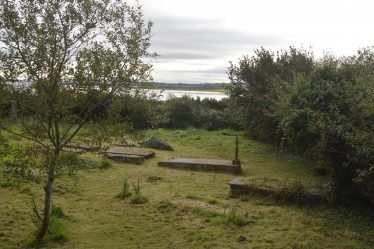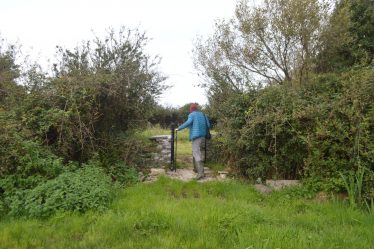Tobernamanorha, Tobar na mBan Orá, Baunmore



Townland: Baunmore, previously Banmore or Bánmór, Kilfearagh
Description of Holy Well and Landscape Setting
This well is indicated as lying close to the old Killbeg Cemetery in the field that surrounds the graveyard. It was said to be in an area of the field a little to the north east, against a hedge. However, at the time of the research visit no trace of the well could be found.
Saint and Feast Day Associated with Holy Well
The name of the well may mean ‘The Well of the Golden (Haired) Women’ or perhaps more likely ‘The Well of the Prayerful Women’. Ór in Irish can mean gold, or to pray. There is an entry on Tobernamanorha well in the National Folklore Schools’ Collection which makes reference to three holy women killed during Penal times for their faith.
(See additional information for full account).
The Ordnance Survey Letters, 1839, also include a reference to the well at Tobernamanorha:
‘There is a Holy Well here called Tobar-na-mBan-Ortha at which Stations continue to be performed, but on no particular day.’
Natural Heritage around the Holy Well
The location of the well is in a typical grazing field, with hedges and medium sized hedge trees. The terrain where the well is presumed to be is heavy and wet underfoot.
Heritage Attractions Nearby
The Shannon Estuary at Poulnasherry Bay is very close to the townland.
Kilrush Town is a 15 minute journey by car.
Additional Information
Entry on Tobernamanorha in the National Folklore Schools Collection, 1937:
‘The graveyard named the Cill Bheag is situated a mile away from my house in Banmore. The old name of the Cill Bheag is Cill na Ban Oir. This means the church of the golden women. They were three holy women who were martyred for their faith during the Penal days. There is an old blessed well outside the Cill Bheag and it is called after St. Seanán. The holy women were dressed with yellow dresses and shawls and were called the mban Oir and they had Tobar na mban Oir.
There are the remains of an old mud house 150 yards north from the Cill Bheag and it’s believed the mban Óir lived there.’
This story was told to me by
Patrick O’Dea, Banmore, Lisdeen.
Age 60 years.
It was told to him by his mother who is nearly 100 years.
William Carey, Moyasta, Age 14 years.’
Discover More…
National Folklore Collection, Schools Collection, 1930s
Ordnance Survey Letters, Royal Irish Academy
Ordnance Survey Letters, Ask About Ireland
Frost, J 1893, The History and Topography of the County of Clare: From the Earliest Times to the Beginning of the 18th Century, Sealy, Bryers & Walker, Dublin
Records of Monuments and Places Number
RMP-CL056-06103




No Comments
Add a comment about this page